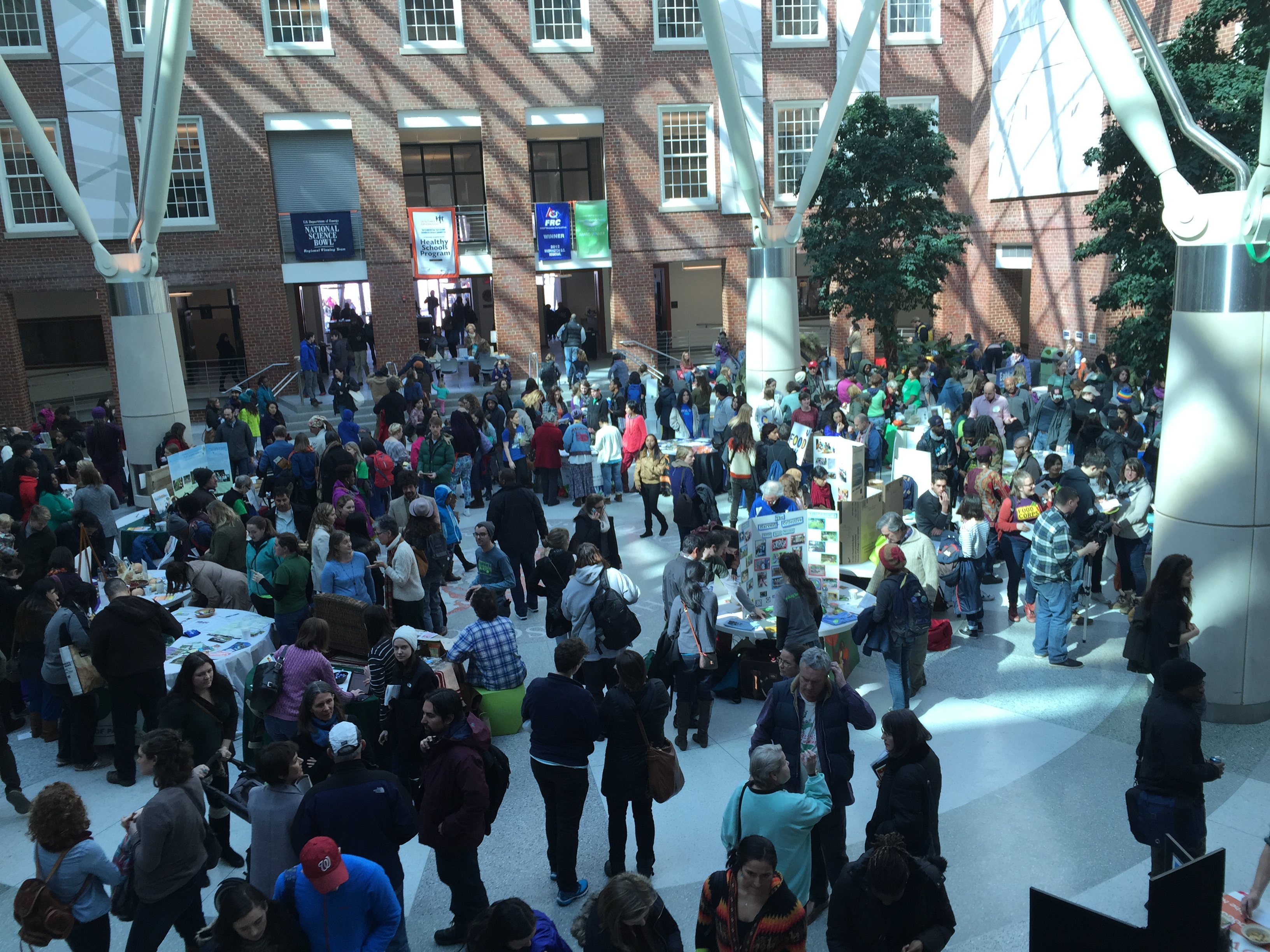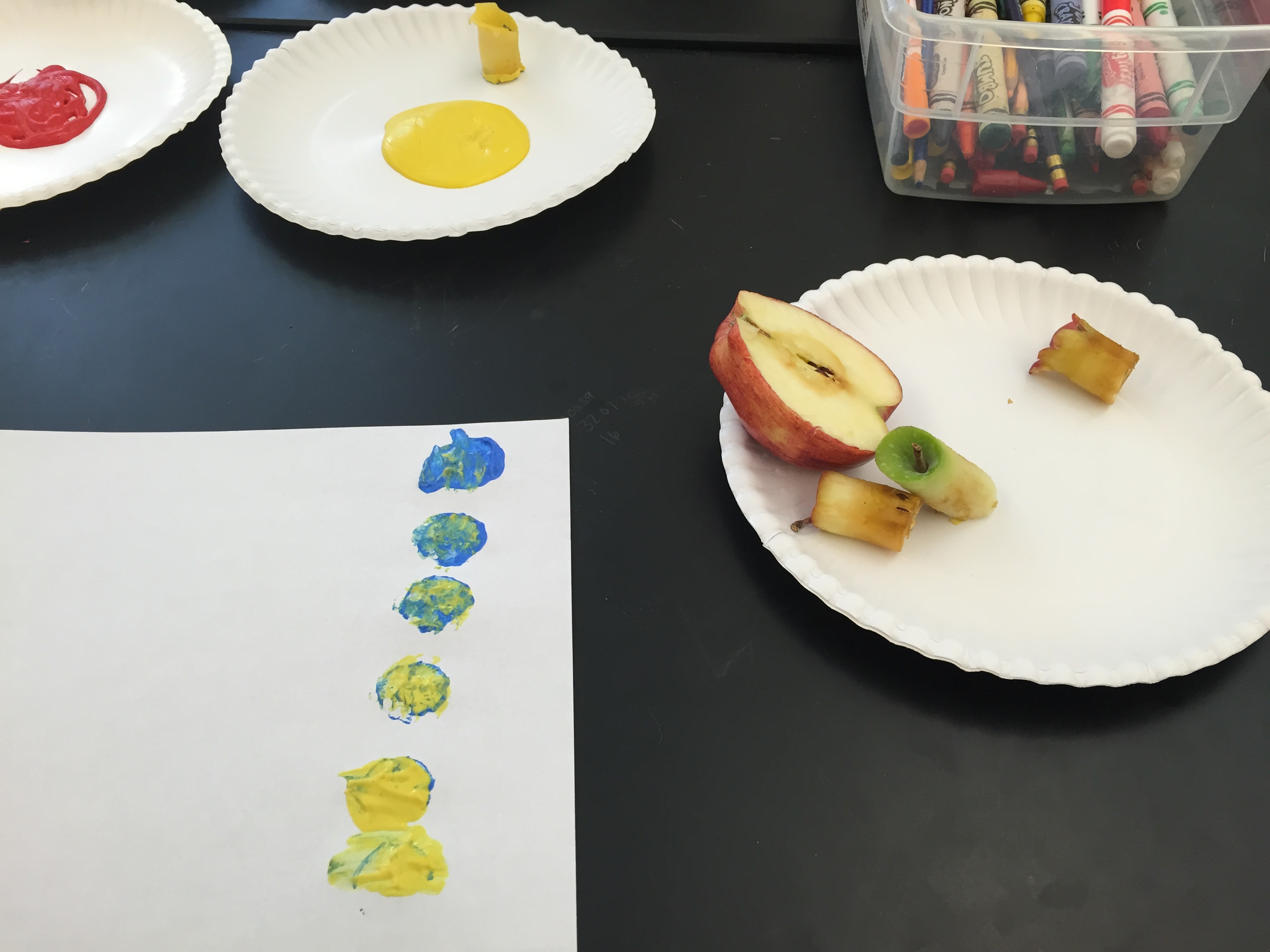Getting dirty should be an essential part of every kid’s life. After all, kids are highly washable. One great way to get children involved in the Great Outdoors is by teaching them gardening, especially growing fruits and vegetables. As I’m already involving Sprout in my garden, I was thrilled to consider some new philosophical approaches and learn some practical activities for gardening with children at this year’s Rooting DC conference.
While a lot of the workshops were designed for teachers, I was particularly interested in learning about gardening as a parent. The presentation from Permiekids founder Jen Mendez hit the spot. She explained that permaculture can be used as a philosophy not just for growing food, but for life. It is based on three values: care for people, care for the earth and finding sustainable ways to use surplus. The actions flowing out of these values should reinforce and feed into one another. While I’ve been interested in permaculture for quite a while, I had never seen it summarized quite so succinctly. While we think of “excess surplus” as being inherently about physical goods, she pointed out that it can also be an “excess” of skills, time, or especially in the case of young children, energy. Skills can be taught to others, time can be used to build something good, energy can be harnessed into service. It provided a really different perspective on how to approach parenting and children’s behavior. Being bored is just an excess of time and energy!
But it wasn’t all philosophy. Jen also had a lot of fun, practical activities for engaging children in nature. She demonstrated how you could use leftover scraps from apple pie to make apple cider vinegar before composting them. Cores and mushy slices can make interesting paintbrushes. Cracking nuts – whether with a nutcracker or more creative tools, like rocks – can develop fine motor skills.
Her suggestions extended beyond crafts to broader approaches to learning in general. One idea that was brilliant and absurdly simple was having a Question Wall in a prominent place in the house. Whenever someone has a question – child or adult, serious or silly – they post it to the Wall. That way, even if you don’t have time to answer right at the moment, you can still investigate it later. Toddlers are known for their love of “Why?” and a Question Wall seems like a great way to show kids that their questions are valuable without running late to every appointment.
While that workshop had the most personal application, the other two presentations I went to were more relevant to my community volunteer work. Although I haven’t been an active urban gardening volunteer for a few years, I do have a dream of starting a youth garden at the town park across the street from me.
The first session, called Bringing the Neighbors Back to the Hood, framed urban agriculture projects around the seven principles of Kwanzaa. As I knew very little about Kwanzaa before, it was fascinating to learn about these values.
I particularly appreciated the reminder of Kujichagulia or self-determination – that we need to respect people’s selves and experiences. As a practical matter, this means finding out if people in my neighborhood are even interested in starting a youth garden instead of going off and doing it on my own. It also reignited my interest in doing a project to interview the members of the community who have lived here for decades about their memories of growing and eating food. Signage in the youth garden recalling these stories could connect the older and younger generations.
Their discussion of Ujima – collective work and responsibility – also struck me hard as a upper-middle-class white girl. The presenters made the point that not only is everyone is obliged to help the greater community, but we need to appreciate what people can bring instead of what they don’t. One presenter said that instead of labeling people as “underprivileged or underserved, all of those ‘under’ words,” we should consider how to use their existing assets and skills. She said that when they worked with developmentally disabled adults, they said they had “differing abilities” instead of “special needs.” While that might sound like being “politically correct,” it’s actually much more respectful towards people you’re interacting with. For my theoretical youth garden, this was a reminder that learning goes both ways, not just from adults to children.
The principle of Kuumba or creativity tied very strongly into my final workshop for the day, which was presented by City Blossoms. An organization that focuses on youth gardening, City Blossoms has a lot of great ideas for pre-K and other young children. The presenter showed photos of a number of their community gardens that incorporate art and music. They repurpose old bicycle wheels into noisemakers, turn rain gutters into painted xylophones, and hang beads from painted wood to create colorful clouds. Digging beds for little kids allow them to play freely without messing up the vegetables. With chalkboard walls, children can write and draw to their hearts’ content. All of these projects seemed very doable and cheap for any youth garden.
After the slideshow, the City Blossoms person demonstrated a couple of activities they do with school kids when the weather is foul. Teachers or volunteers can use a seed sorting game to discuss sizes, colors, and texture. Gluing the seeds into a mini-mosaic allowed students to incorporate patterns like stripes and spirals, as well as practice their hand-eye coordination. I was pleased with my mosaic, although most of the seeds had fallen out of the clay by the time I got home. The dangers of trying to carry too much on public transportation!
Rooting D.C., when hundreds of people gather to celebrate their love of urban agriculture, always reinvigorates me. I’m so grateful that we have an event that covers everything from racial justice to youth gardening, often in the same session.


